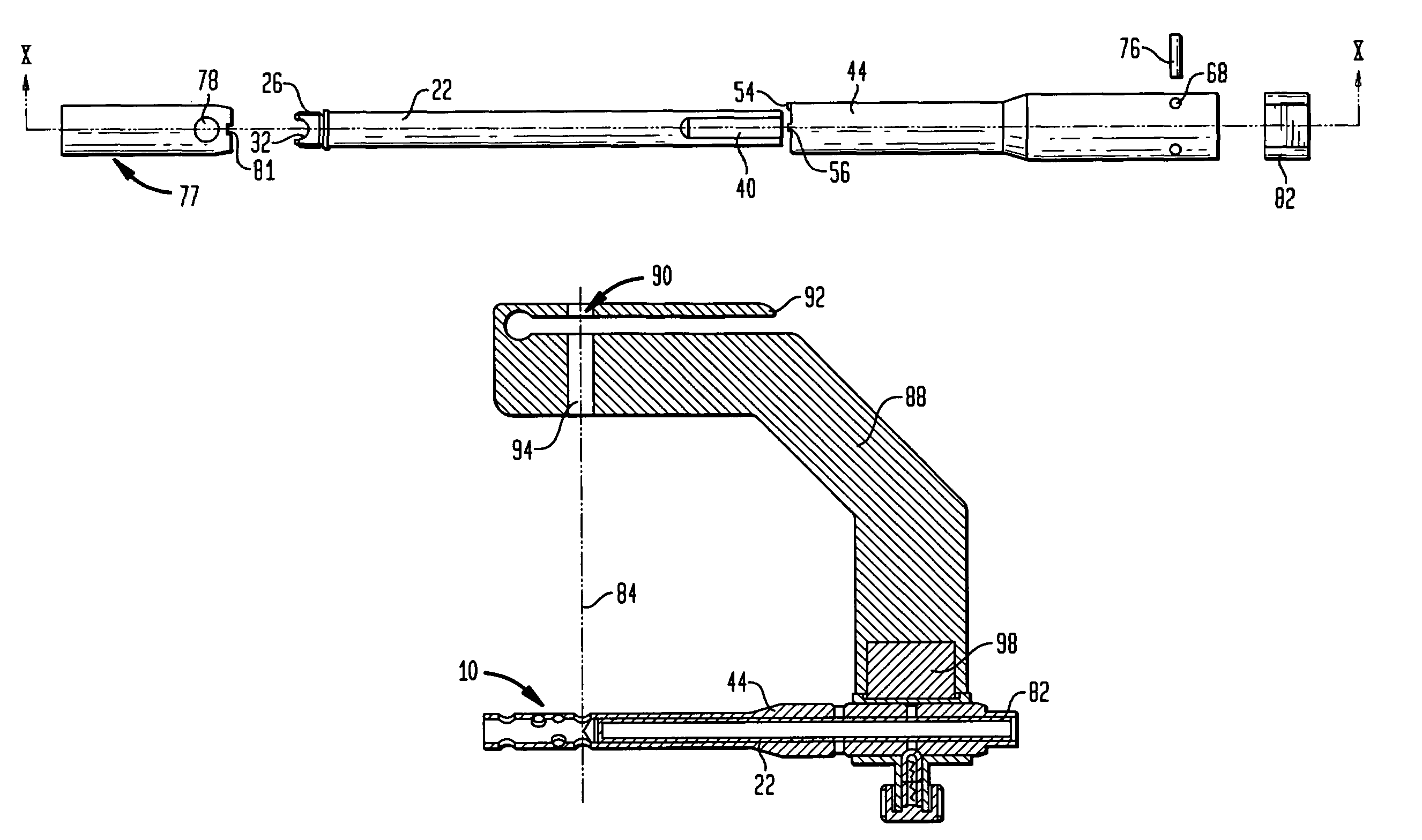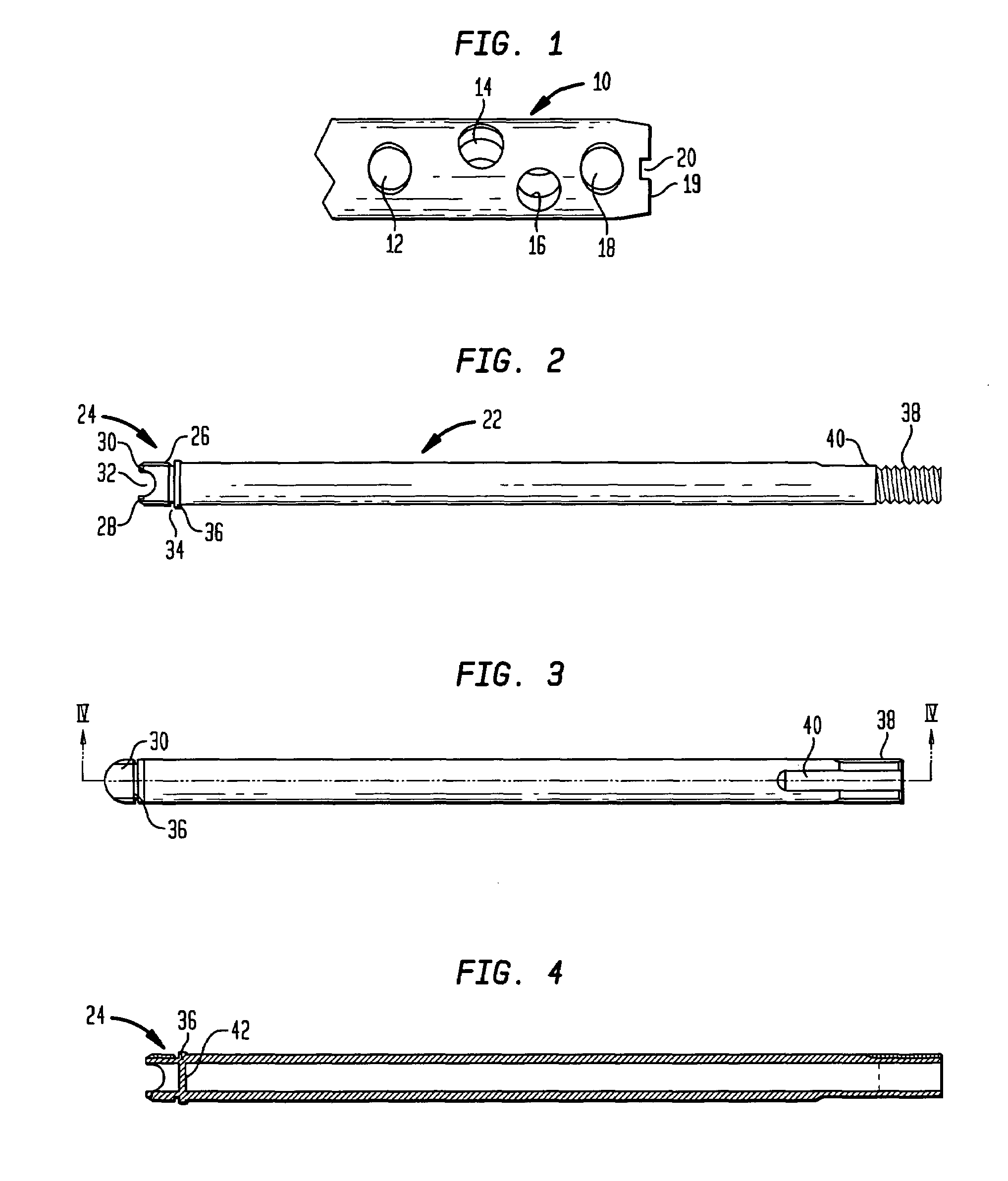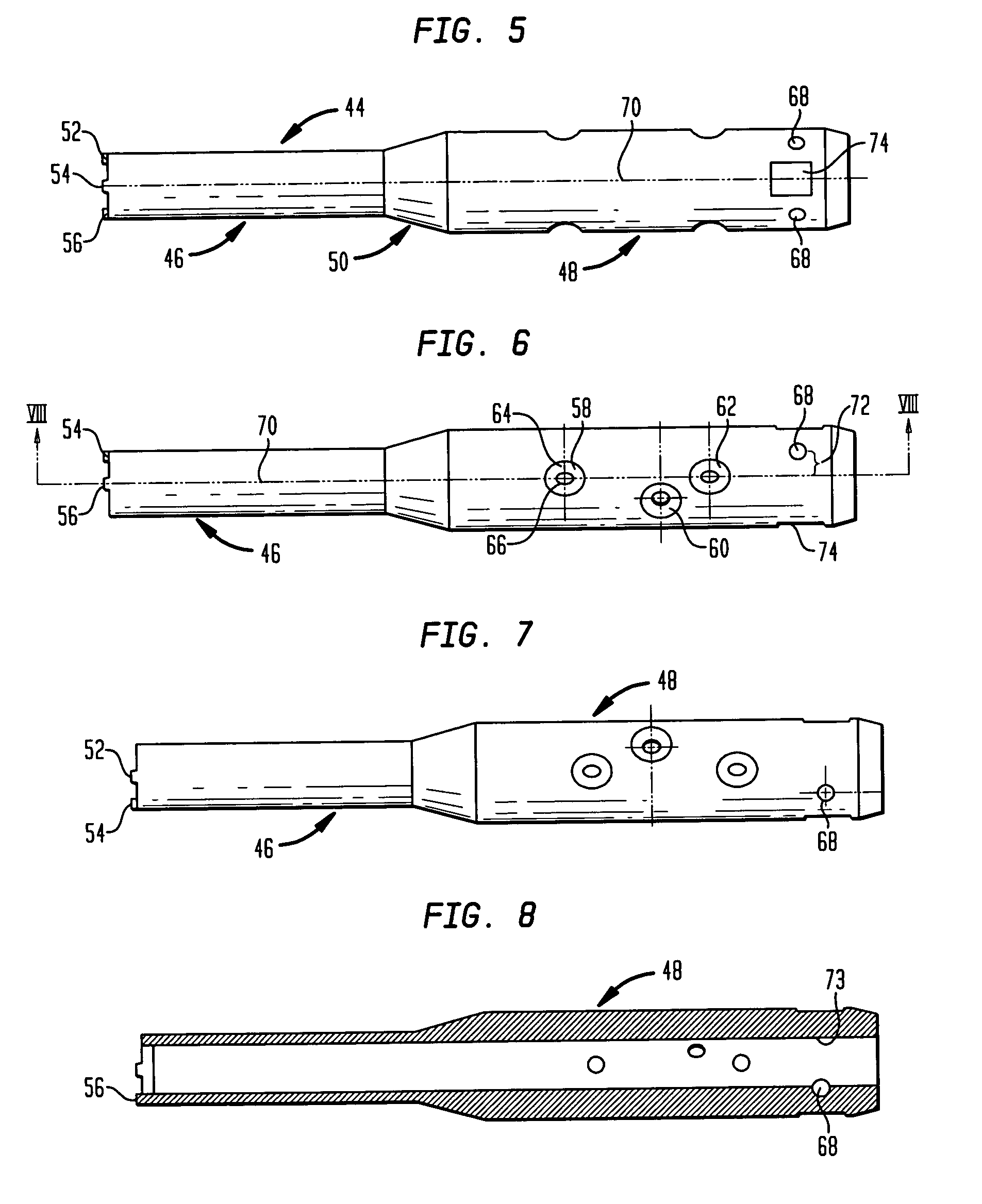Locking nail and targeting apparatus
- Summary
- Abstract
- Description
- Claims
- Application Information
AI Technical Summary
Benefits of technology
Problems solved by technology
Method used
Image
Examples
Embodiment Construction
[0030]FIG. 1 shows the distal end of a locking or supracondylar nail 10. The locking nail is provided with four cross-bores 12, 14, 16 and 18 which serve for receiving bone screws and / or condylus screws to locate the locking nail both axially and radially in the bone. On the end face 19, locking nail 10 is provided with two recesses 20 the nearest one of which is shown and the second being spaced around the nail from the other at an angle of 180° in FIG. 1. In the preferred embodiment, recess 20 is of a rectangular shape. In the locking nail illustrated, the cross-bore 18 is at a distance of 6 mm from the free end of the nail. Not shown in FIG. 1 is a female thread which is provided inside the locking nail and which from the end 19 of the locking nail extends beyond the beginning of the cross-bore 18.
[0031]FIG. 2 shows a nail retention screw 22. The end 24 is provided for connection to locking nail 10. End 24 has a male thread 26 which corresponds to the abovementioned female thread...
PUM
 Login to View More
Login to View More Abstract
Description
Claims
Application Information
 Login to View More
Login to View More - R&D
- Intellectual Property
- Life Sciences
- Materials
- Tech Scout
- Unparalleled Data Quality
- Higher Quality Content
- 60% Fewer Hallucinations
Browse by: Latest US Patents, China's latest patents, Technical Efficacy Thesaurus, Application Domain, Technology Topic, Popular Technical Reports.
© 2025 PatSnap. All rights reserved.Legal|Privacy policy|Modern Slavery Act Transparency Statement|Sitemap|About US| Contact US: help@patsnap.com



